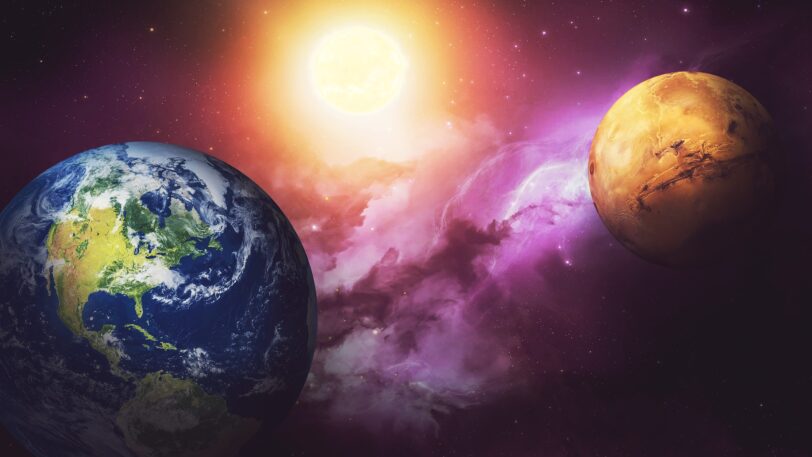Mars is cold, red and dead Planet. However, it was once like Earth – covered with rivers and lakes. Even the day is 24 hours and 37 minutes …. Now days we are speaking more than ever about manned missions to the Red Planet, which will be implemented in thе 30s or even the 20s of our century. Can we really successfully colonize Mars?
The good news is that there is plenty of water. Scientists estimate that there are more than 5 million cubic kilometers of frozen water in the north and south pole of Mars. If we melt it all, we get an ocean of 35 meters depth, which will cover the entire Planet. This water can solve the second problem – what we will breathe.
The atmosphere of Mars is very thin and constructed almost entirely of carbon dioxide instead of oxygen to which we are adapted. The colonists, however, could use electricity to split H20 into hydrogen and oxygen.

There, the solar radiation is comparable to that on Mars. It has been confirmed that the light will be enough to keep plants on the Red Planet. Even tomatoes, carrots and other veggies can grow safely in a variation of Mars soil.
Sooner or later, any of the machines on the Red Planet will break off and repair or replacement will be needed. The shortest distance from Earth to Mars is 55 million kilometers – and this is only in moments in which the two Planets are on opposite side of the Sun. Accordingly, from a practical point of view, spacecraft can be sent there once every 26 months.

Last but not least – there are danger for the human health. Mars is smaller than Earth and the gravity is only 1/3 than this here on our Planet. Yes, the colonists will be able to jump high and create structures of lighter materials. However, this will reflect badly on our bodies. We rely on constant pressure of gravity to strengthening bones and muscles. In fact, the astronauts will have to go through regular exercise in space in order to be in shape.
Cosmic radiation is an even bigger problem. Sun ejects billions of high-energy particles that may harm our DNA and cause cancer. Fortunately, Earth has a strong magnetic field which reflects 99.9% of these particles. Mars does not have one. This means that the colonists will not be protected during the journey.
In the shortest possible trip to Mars, witch is about 6 months, will increase the chance of a developing cancer by more than 3%.
From a theoretical point of view none of these problems are insurmountable. Maybe we can create super magnets to repel radiation and better engines probably will reduce travel time to Mars. It is even possible to create 3D printers next generation to produce spare parts directly to the Red Planet using local materials.
Of course the people, who are able to make all this possible, are maybe already born. Or maybe not yet. Or maybe you are one of them…





